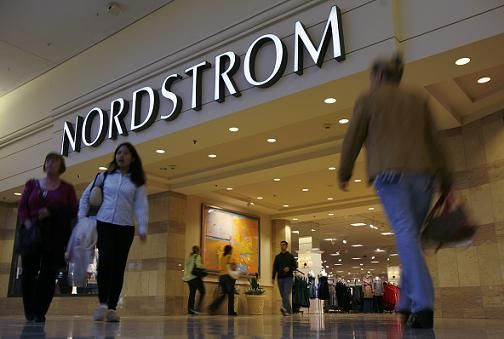January 2013 US Same-Store Retail Sales Forecast: Apparel Vendors Retreat, Dollar-Type Stores Soar, JC Penney Flounders

Many of the biggest U.S. retailers on Thursday will report January same-store sales, offering a glimpse into how willing Americans were last month to seek out post-holiday deals and where they went for those deals.
Retail Metrics, a Boston-based market research firm that provides sales estimates for specific retailers, estimates that overall U.S. retail same-store sales grew 2.8 percent last month compared to January 2012. Same-store sales, also known as comparable-store sales, measure sales at stores that have been open a year or more.
“We've been in a pattern in the last couple of years of seeing this mid-single-digit range in January. Two-point-eight percent seems about right,” R.J. Hottoby, senior retail analyst at Chicago-based financial data company Morningstar, said.
Consumer sentiment rose unexpectedly last month on the key Thomson Reuters/University of Michigan monthly poll, but the expiration of a two-year reduction in workers’ Social Security contributions meant 2 percent smaller paychecks as of Jan. 1, and that likely weighed on sales.
The biggest loser is expected to be J.C Penney Co. Inc. (NYSE:JCP), with a forecasted 26 percent drop in same-store sales last month compared to the same month last year, according to Retail Metrics.
The Plano, Texas-based retailer is one of the few major players that doesn’t issue a monthly sales report, so the world will have to wait until Feb. 27 when the company will release its fiscal fourth-quarter and annual results. But the expectations are that CEO Ron Johnson’s plan to reverse his company’s misfortunes has yet to yield results. (The Thomson Reuters I/B/E/S estimate has investors losing $1.26 per share for fiscal year 2012 on a net income retreat of $269 million.) J.C. Penney has been struggling to shed its dusty image as a second-rate discount outlet, but last year’s efforts, including scrapping markdown pricing structures, failed so badly and so quickly that the company spent much of the year undoing the damage.
Other expected losers for January include family casual apparel vendor Abercrombie & Fitch Co. (NYSE:ANF) of New Albany, Ohio, which is expected to post comparable store sales falling 2.4 percent, and New York-based youth apparel retailer Aeropostale, Inc. (NYSE:ARO), which could see its comp sales fall 8 percent, according to Retail Metrics.
Specialty retailers across the board are expected to see above-average growth of 3.1 percent. This category includes TJX Companies Inc. (NYSE:TJX) of Framingham, Mass., the Gap Inc. (NYSE:GPS) of San Francisco, Calif., and Ross Stores Inc. (Nasdaq:ROST) of Pleasanton, Calif.
Discounters such as Target Corp. (NYSE:TGT) and subscription warehouse vendor Costco Wholesale Corp. (Nasdaq:COST) should see 2.9 percent growth.
Bottom dwellers are expected to reap the bounty of cost-conscious consumers, Retail Metrics estimated. San Diego-based PriceMart Inc. (Nasdaq:PSMT) could see sales rocket 9.5 percent, while Family Dollar Stores, Inc. (NYSE:FDO) of Matthews, N.C., could see a more modest 4.7 percent rise in sales.
Wal-Mart Stores Inc. (NYSE:WMT), the world’s largest retail operation, also doesn’t issue monthly sales figures but is estimated to have seen its sales grow 1.9 percent. The retail behemoth of Bentonville, Ark., will release its fiscal fourth-quarter and annual report on Feb. 21.
Department store stalwarts Macy’s Inc. (NYSE:M) of Cincinnati, Ohio, will probably report sales growth of 4.8 percent for January, while high-end retailer Nordstrom Inc. (NYSE:JWN) is expected to have gained 5.7 percent, according to Retail Metrics.
The National Retail Federation recently predicted that national retail sales (excluding auto purchases, gas station buys and eating out) will grow at a modest 3.4 percent, down from a preliminary estimate of 4.2 percent last year. Meanwhile, the nation’s largest advocate for merchandisers expects digital sales to continue to climb as much as 12 percent.
Same-store sales exclude more recently opened outlets and are considered a good ongoing measure of a merchandisers’ performance.
© Copyright IBTimes 2024. All rights reserved.





















